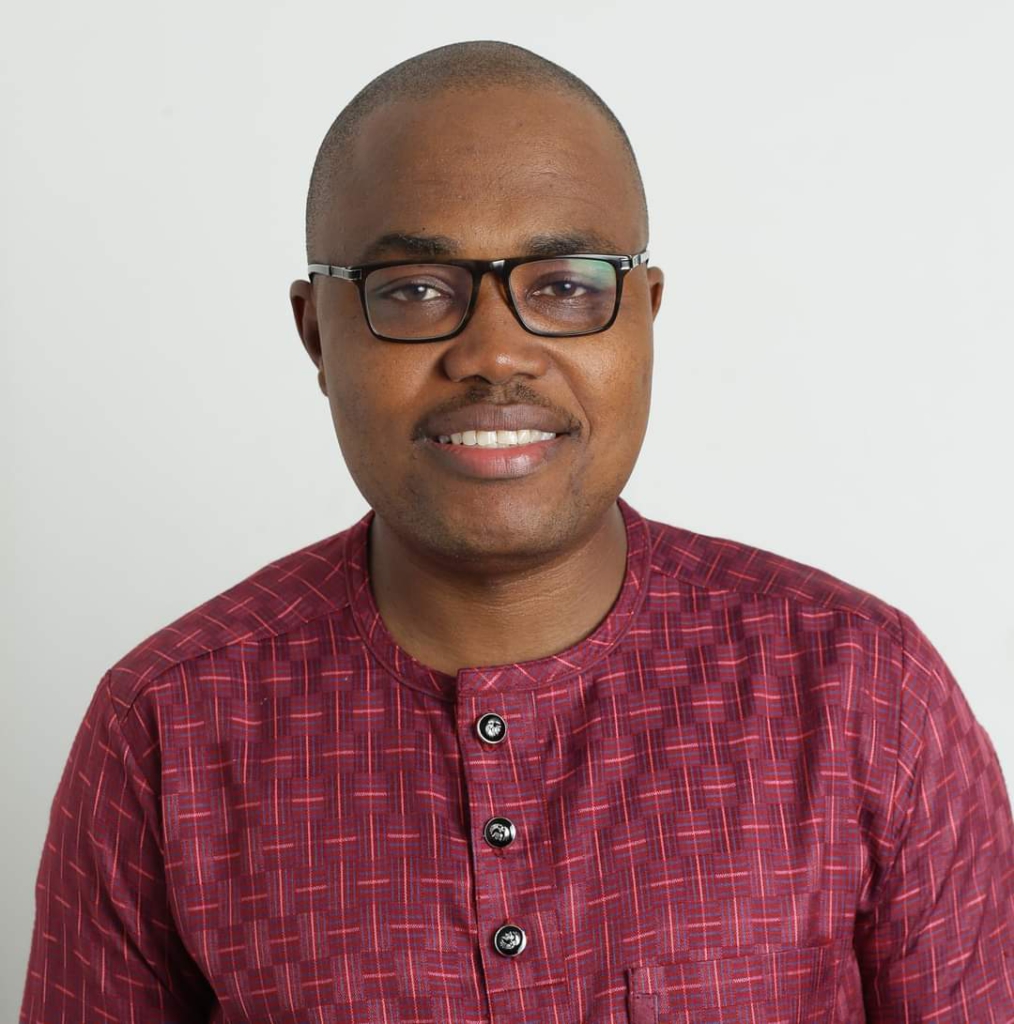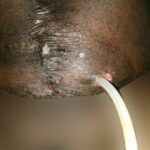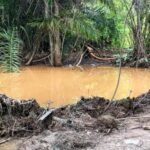Overview of Mining in Ghana
The mining sector in Ghana is one of the major contributors to the economy and foreign exchange (Roe & Samuel, 2007; Hilson, 2009).
Ghana commercially exploits gold, diamond, manganese, and bauxite.
In 2019, gold accounted for 93.28% of gross mineral revenue with lower contributions from manganese (6.17%), bauxite (0.54%), and diamond (0.01%) (GCM, 2019). The mining sector’s total fiscal contribution in 2019 was the second-highest at 7.7% in domestic revenue and in terms of total government revenue, the mining and quarrying sector’s contributions increased from 4.9 percent in 2018 to 7.6 percent in 2019 (GCM, 2019).
The mining sector in Ghana is complicated, comprising large and small-scale miners. The large-scale mines control 85% of the sector’s productivity but are largely controlled by foreign companies. Small-scale mining makes up the remaining 15% and accounts for 34% of gold mining in Ghana (Kervankiran, Dziwornu, & Temurçin, 2016).
In terms of workforce and employment, there are wide variations between the large and small-scale mining industries. The total workforce engaged directly in the large-scale mining industry according to the Chamber of Mines in 2019 was 11,899 (GCM, 2019) as compared to over 1 million people estimated to be directly engaged in the small-scale gold mine industry (Aryee, 2012; Hilson, 2002) of which 85% of miners are estimated to be operating illegally (Hilson & Osei, 2014; Teschner, 2012). Small-scale mining accounts for the largest number of the total workforce in the sector (Hilson & Osei, 2014).
Despite these economic contributions of the sector, mining impacts are well established to be adverse to the environment, health, communities, and long-term sustainability of the ecosystem.
Role of the Media in Setting Agenda on Environmental and Social Issues
The media have a fundamental role in building a decent society. Its best tool is to spread awareness and create a platform for engagements. They highlight the political, social, environmental, and financial issues and allow the public to know what is going on in our society. The media is known to make the public mindful of privileges and create awareness against social vices in society, uncovering and degenerating government officials and lawbreakers. They are important in placing issues on the political, social, religious, and environmental platforms and creating awareness around them.
In Ghana, the role of the media is increasingly becoming dominant in policy processes and social accountability and action. Their role in informing the people about what is happening around them is increasing (Asomaning, 2005), and the media agenda mirrors the agenda of the public through which they create national consensus over issues and concerns (Anokwa & Salwen, 1986).
A study by Kwansa-Aidoo (2001) found that the Ghanaian media agenda about environmental protection did influence the environmental agenda of the public. Despite the low literacy level, the media framed the issues and events using symbols and images to set the public agenda. The power and influence of the mass media in Ghana are enormous, according to Safo (2008), their role and influence on agenda-setting amongst the public are almost authoritative.
The media have played a significant role, particularly in the effect of illegal mining, and have successfully set the agenda for action against illegal mining. The media’s role is akin to society’s watchdog, endeavoring to ensure that the government, public authorities, societies, groups, institutions, and individuals engaged in these activities are held accountable. They have also been noted to engage the public to address social issues.
Ghana, for decades, has struggled to address the issues of galamsey and its impact on the environment, livelihood, and communities. Recently, various stakeholders including the media, some communities, political leaders, NGOs, and CSOs have expressed concerns about the extent of galamsey and its impact on the country as a whole. In 2019, illegal mining captured the attention of the media.
They opted to advocate against it, which led to the ‘Stop Galamsey Now’ Campaign in Ghana which saw the first collaborative efforts of the media to address this social and environmental challenge.
Setting the agenda for the ‘Stop Galamsey Now Campaign’
Setting a national agenda has always been the role of the media in Ghana. The media is powerful to determine what topics they promote, how the general public receives the information, and who they engage in the process of disseminating information as well as managing the reaction of key stakeholders around issues arising.
Several factors determine how an agenda is set, what to talk about, how to talk about it, who to contact, outcomes, and how to manage perspective around it. Respondents express how the media houses/stations sometimes set the agenda on issues of interest to them, their audience, the citizens, communities, and organizations. Most often these agenda are set around issues relevant or critical to national development, community improvement, and social vices.
“I will say the media has for the past two decades mostly dictated the pace and direction of the nation’s issues. Policymakers are now picking their bearings from media… the media prompts governments on what the people need and what is [social issues] capable of making them popular or unpopular. My brother, the media is the king of agenda-setting, and no dispute about that.” (Deltine, Editor)
“If you listened to the [February 2020] State of the Nation Address by the president [Nana Akufo-Addo], almost everything he was talking about was things the media highlighted. This is an indication that the media sets the agenda for policymakers” (Mubarak, Editor)
“We tell the true story of Ghana…we call on the government to take the needed action. We are watchdogs and reminders to their [politicians] promises and social contracts to the people of Ghana. So in general, the media in Ghana is a gem in setting national agenda” (Atsu, Editor)
Through the agenda-setting process, the media houses/stations hold people such as politicians, leaders of organizations, companies, and communities accountable for their roles, actions, and inactions. Thus, they serve as watchdogs, promoters, and mediums for the citizens and the communities. They also noted that they are most interested in setting an agenda on issues and concerns to get them addressed, protect vulnerable groups as well, and promote their missions and values.
The media became a tool for social change and a force creating awareness and responsibility for the devastating effects of illegal mining activities. The media used diverse platforms, programs, activities, and stakeholders to commence the ‘Stop Galamsey Now Campaign’ to draw the general public and policymakers’ attention to its environmental impact.
Stop Galamsey started as social advocacy by some media houses/stations but quickly gained so much attention and interest, it transformed into an agenda for change and improvement of the rivers, streams, valleys, and water bodies from illegal mining. Here are some recounts of how the entire campaign started.
“Well, it started with a couple of reports. We have a regional correspondent called [name withheld] who does a lot of reports from the rural areas in the Western region. He started noticing there have been changes in the water bodies and started making stories around it and it all led to the galamsey activities in these areas ….” (Jacinta, Reporter)
“So we didn’t have to wait for the government to even start creating awareness around this issue. There were a lot of community complaints that took us to places that we thought people were destroying the environment [through illegal mining activities]” (Obuobi, Editor)
“We led the campaign as the national network and in all our major bulletins we carried the news.” (Mansura, Editor)
Strategies to promote the ‘Stop Galamsey Now Campaign’
The media created a broader platform for people to interact and share their views and thoughts on topics that were prevalent within society. Activities employed by the media include the writing of articles, documentaries, current affairs shows, a petition to parliament, and other state agencies.
Other activities such as investigative journalism, talk shows, breakfast shows, call-in programs, and expert interviews were also used. Some media firms took to the streets to showcase tested samples of turbid water as evidence of some of the galamsey activities. All these efforts were geared towards drawing the attention of the government and the general public to the dangers posed by galamsey.
“So we did a lot of stories; we had discussions, features, documentaries; documentaries [on radio and TV] which started before the stop galamsey issue became topical” (Obuobi, Editor)
“We took pictures of water samples for comparison, designed the campaign and nicknamed it #StopGalamseyNow, printed t-shirts, and went onto the streets to show people how bad the situation was. We had news programs each day on TV and radio, and put out infographics online [website and social media].” (Zeinudeen, Editor)
“We reposted continuously and had in-studio discussions with experts. We collaborated with the community people who were direct beneficiaries of the illegal mining activities. We also partnered with chiefs and those involved in the act; by way of sensitizing them on the need to have an attitudinal change.” (Mubarak, Editor)
“We dedicated our airtime to discussions, news items, and special documentaries to highlight the deadly impact of the activities of the gallamsey” (Naifa, Reporter)
The significance of any agenda setting is demonstrated by the amount of time dedicated to its campaign, resources allocated to it, its ability to cut across media stations, programs, and activities, and most importantly the stakeholders championing the cause. Also, the authorities presumed to be in charge were engaged.
The level of evidence generated and used to pressure the authorities in charge is so important in how the media set the agenda for the Stop Galamsay agenda. They used to print columns with dedicated center and front pages, feature and documentary films, interviews during prime news, morning and breakfast shows, call-ins, and advertisements, and use expert and research evidence.
The study found that with the Stop Galamsay agenda, media houses across the country collaborated to promote their efforts towards it. This dominated peak periods and programs such as the breakfast shows, drive time, evening programs, etc. What was profound is the collaboration amongst these media houses to create a media movement called Media Coalition against Galamsey to address the adverse impact of illegal mining.
“Our station was part of the Media Coalition against Galamsey educating the masses. Both our TV & Radio morning show discussed the issue and asked the necessary questions from duty bearers for more than a year. Adverts on the effects of galamsey were aired without any financial commitments.” (Anokye, Manager)
Impact of the Stop Galamsey Campaign
The media’s collective efforts towards this agenda and campaign yielded some positive impacts such as: engaging the public in the campaign; gaining the attention of policymakers, law enforcement agencies, community leaders, politicians, and lawmakers to enforce the laws and regulations, or institute measure to address the impact; sensitize the miners on the need to put an end to illegal mining and related disruptive activities and restored the water bodies to their natural state to make it treatable by the Ghana Water Company Limited.
They also created awareness and got the communities to take up the responsibility to protect these resources and the environment.
“For the first six months, there was a significant improvement in the turbidity of our water bodies after we had stormed Parliament for signatures from parliamentarians. Both the Minority and Majority Leaders read the media statements on the floor of Parliament, parliamentarians signed our petition and the Speaker himself gave a strong-worded statement on the campaign.” (Zeinudeen, Editor)
“We made a great impact by telling the story and connecting the various agencies to take the needed action.” (Alima, Reporter)
“With most of the mining sites, because we are their main source of news provider, after showcasing the dangers of their activities, most of them stopped and became change agents and advocates in their communities.” (Naifa, Reporter)
“Areas where we reported such as Atiwa, Offinso, Assin, Dankyira, Bia East & West, Bibiani, and others, saw some improvements. Just last year [2019], our reportage on some galamsey activities in the Atiwa Forest brought their activities to a halt.” (Esaaba, Reporter)
Following this campaign, the President of the Republic of Ghana made a policy statement to institute joint security, inter-government agencies, and ministerial task forces to deal with the threatening activities of illegal miners. ‘GalamStop’, is a unit directly under the Office of the President.
‘Operation Vanguard’, a joint Ghana Police, Ghana Army, and Forestry Commission Task Force and Inter-Ministerial Committee on Illegal Mining (IMCIM), and an ad-hoc committee was set up to regularize the activities of small-scale miners by way of licensing and allocating mining sites to them and regulating their activities. These are the key achievement of the campaign.
“It was all joy when the President realized the devastating impact of galamsey through the efforts of the media and took a policy decision by instituting the ‘Operation Vanguard’ [a joint army, police, and forestry commission effort] to help clamp down on illegal mining activities. (Atsu, Editor)
“As the campaign picked up momentum, Members of Parliament, Ministers, and the President of Ghana all became aware of the havoc being done to our water bodies [which is our primary source of drinking water] in Ghana. The President constituted the Inter-Ministerial Committee on Illegal Mining (IMCIM) with oversight responsibility of regularizing the activities of small scale mining [registering and issuing mining licenses].” (Selikem, Editor)
Despite these achievements, concerns about the enforcement of the laws and interventions were raised by some respondents. Illegal mining is a primary source of livelihood for many people in the mining communities. Operators, businessmen, investors, association members, and some community and political leaders were noted to be heavily involved in the act and therefore against the campaign.
An unexpected event was reported when the Secretary to the IMCIM and the Minister for Environment Science and Technology were accused of taking bribes and allowing their cronies to mine at unapproved sites (Ghanaweb, 2020). Such incidents dwindled the confidence level of the general public and the media leading the campaign.
“We did a very good job but we were stabbed in the back. Those who were supposed to implement what we were advocating took advantage and were rather involved in the galamsey themselves. They were rather making money and selling excavators [seized by the task force] and all that kind of thing.” (Eliana, Editor)
“I think we did a 100% job. It is the authorities who failed to act. We did more than 100 % because such a campaign has never happened in Ghana.” (Araba, Reporter)
Challenges encountered by the Media during the Campaign
It became evident that the interest, efforts, and commitments toward the campaign did not necessarily yield the required results because some of the authorities and law enforcement agencies refused to act and were not held accountable by the systems. Corruption was also another factor that frustrated the efforts of the campaigners and communities.
The study identified three major challenges that limited the media’s effort toward the campaign. These are political interference, logistics, and the security of reporters. Some reporters were attacked by perpetrators of illegal mining on the field while gathering news information from certain galamsey sites tagged as ‘danger zones.
This prevented others from going to these sites. The galamsey sites were mostly situated deep in the forests and getting there required adequate security escorts and local guides who are either unwilling to support or compromised. Many of the media organizations reported the risk involved for their reporters and hence, relied on updates from social media and informants within the mining areas.
“The challenges are many but the scariest of them were our reporters being attacked at the mining sites. Most of these miners saw us as enemies to the progress of their businesses. They sometimes pelted them [reporters] with stones and other harmful objects.” (Deltine, Editor)
“Some of the challenges were attacks on our lives, threats, deliberate attempt to block or cover up vital information. I clearly remember when my colleagues and I were chased and shot at Offinso. I was terrified.” (Jacinta, Reporter)
Some media houses also faced logistical challenges such as vehicles to facilitate their transportation to the mining sites, cameras, recorders, and protective gear. Also, funding to sustain their activities was another constraint to the campaign.
“We were always confronted with logistic challenges. Our machines are old and at times when we were trying to send stories and other materials, we found it difficult to do so. We didn’t have vehicles to take us to locations we desired to go [locations considered as hot spots for illegal mining]…” (Kwamina, Reporter)
“We were faced with logistical challenges… due to the large numbers of the mining sites, we couldn’t deploy many reporters and equipment to capture the situation.” (Mansura, Editor)
But the biggest challenge is that some news/stories were influenced by political leaders because they owned the media house/stations. It is reported that some political leaders and their associates had an interest in the galamsey activities. These are influential leaders such as policymakers, regulators, and heads of institutions mandated to ensure compliance but were compromised, especially the security agents and regulators.
“Well, we did our job as we can expect to step back and realize that some unseen hands were working somewhere. So for instance somewhere in the Ashanti Region, we moved in with Operation Vanguard and we were able to [halt the operations of] a company that was mining illegally. Moments later, we were told that somebody from the Jubilee House [Presidency] has called [and instructed] the security team [to] allow the company to continue operations.” (Araba, Reporter)
“Our major challenge was political. We are beyond convinced that ‘Operation Vanguard’ failed because of political interest. There is too much money in mining both legal and illegal and people couldn’t resist the temptation of enriching themselves.” (Zeinudeen, Editor)
Reporters felt demotivated by the challenges they were facing despite their enthusiasm and commitment to the campaign. The community and the public also lost confidence and trust in the authorities and political leaders for failing to support and implement such worthy causes. Even though the campaign is still ongoing and selected media houses are still pursuing this cause, it is not a priority for agenda-setting by most media houses any longer.
Conclusion
The key findings of this research revealed that the media can set a national agenda should they put their resources into it. The ‘Stop Galamsey Now Campaign’ was the first of its kind in combating environmental issues in Ghana spearheaded by the media.
The media through its collaborative effort used what started as national advocacy to set an agenda for action involving multiple stakeholders to curb the effects of illegal mining.
It is, therefore, evident that the media is a critical and powerful influencer of policy processes in Ghana. The success of the ‘Stop Galamsey Now’ Campaign demonstrates this influence. We, therefore, recommend that the media continues to represent the nation’s interest and that their autonomy in doing so be promoted.

Writer: Kojo Asiamah Addo
Lead Advocate, Social Watch Africa
Email: kojoaaddo@gmail.com
Tel: 0246718831





